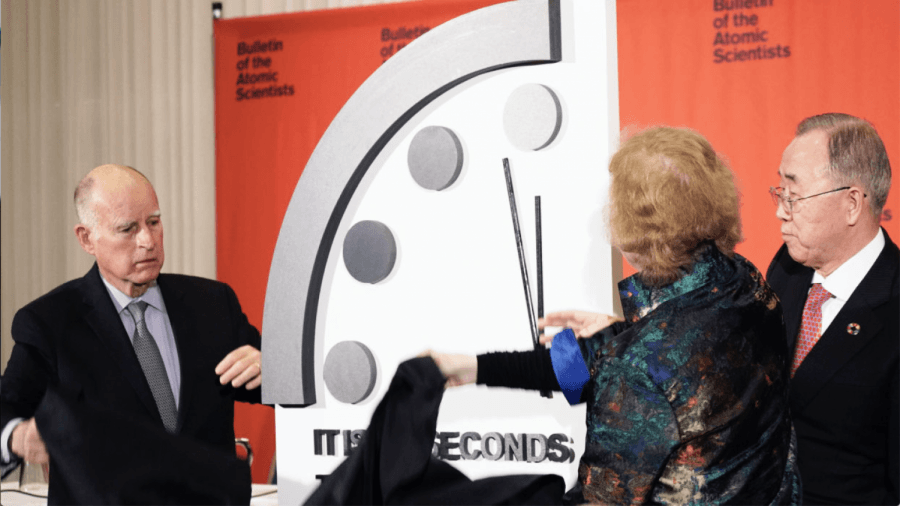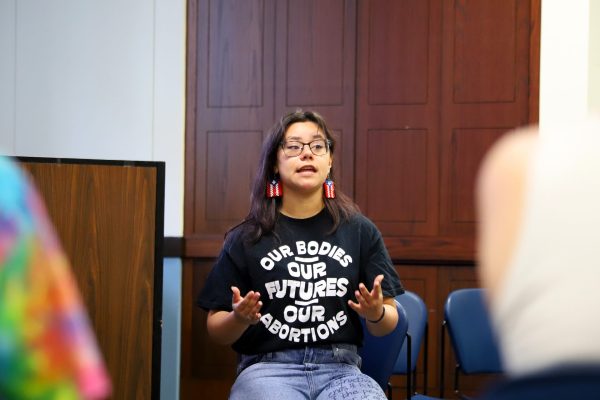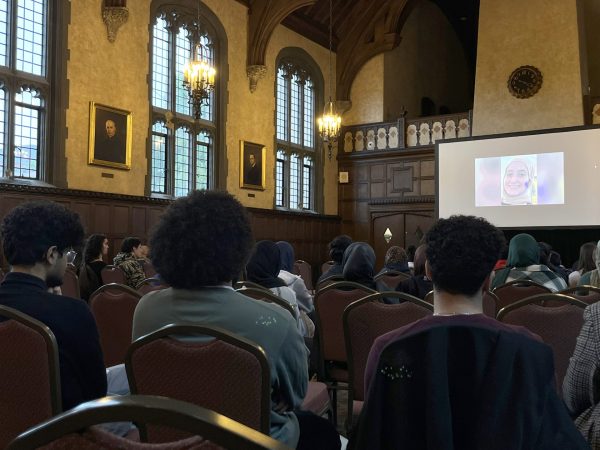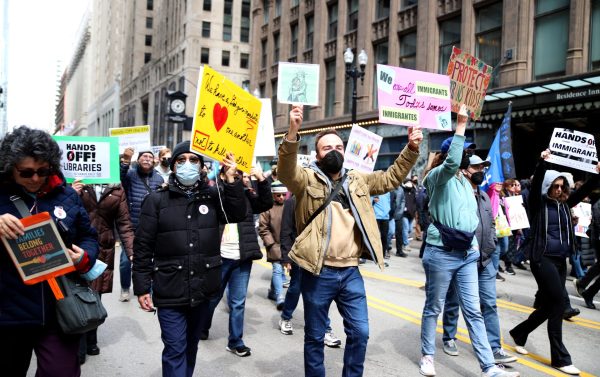Doomsday clock moves to 100 seconds until midnight
Credit: Courtesy of The Bulletin of Atomic Scientists
Former California Governor Jerry Brown (left), former Irish President Mary Robinson (middle), and former U.N. Secretary-General Ban Ki-moon reveal the Doomsday Clock.
The doomsday clock acts as a warning for how close humanity is to destroying the world through our own actions.
In the latest update, the clock was marked as 100 seconds till midnight – which Rachel Bronson, the president of the Bulletin of Atomic Scientists, likened as being within the two minute warning in a football game.
“The world has entered into the realm of the two-minute warning, a period when danger is high and the margin for error low,” Bronson said in a statement released on Jan. 23. “Decisions are made with different strategic reference points, and expectations are raised for decisive action.”
2020 is the 75th anniversary of the first doomsday clock. In line with that anniversary, the clock comes the closest to midnight that the Bulletin has ever released.
The Bulletin cites the driving issues as dangers of nuclear warfare and the threat of climate change, although cyber warfare has also had a major impact.
Daniel Holz is a professor at the University of Chicago in the department of physics, astronomy and astrophysics and a member of the Bulletin of the Atomic Scientist’s science and security board. He discussed the methods behind determining the criteria for the clock.
“We study the global situation and then we come to a consensus,” he said. “We ask ourselves, is the world more or less safe than the world last year? We analyze to the best we can what we consider the gravest threats, and then we make a judgment and set the clock accordingly.”
Holz said the categories are fluid and change with the times. The threats that the Bulletin considers are always related to what humans do, but are not set in stone.
“As technology advances, as civilization advances, we end up with more power, and the power to harm ourselves in a catastrophic way,” he said.
One of the main issues the Bulletin has looked at over the years is the threat of nuclear war – fitting since the creators of the organization were the scientists involved in the Manhattan Project, Holz said. Unfortunately, progress on limiting the arms has gone backwards over the past few years.
“The really depressing thing is that after real progress over a few decades, things are definitely taking a turn for the worst over the last year or two,” he said. “We are abrogating treaties, and the whole regime over which we controlled the spread of nuclear weapons and reduced the threats; all of that is being abandoned.”
In their statement, the Bulletin brings up the Iran nuclear deal as one of their main concerns. The recent killing of Iranian general Qassim Soleimani has also exacerbated relations between Iran and the west and weakened the strength of the nuclear deal. The Bulletin said that it would take Iran less than 12 months to build a nuclear weapon if they completely abandon the deal.
“Lots of things have gone wrong in the last year,” Holz said. “The fact that we are [backing] away from treaties and threatening a new arms race is a very scary thing for many reasons.
“Historically what has put pressure on administrations to try to strike agreements and reduce the number of warheads has been mass movements. People in the street,” he continued. “People worried that we don’t want a nuclear war, let’s step away from the brink.”
Climate change has also become a big part of the doomsday clock. It has become a major issue, especially over the past 10 years, according to Holz.
“Needless to say, progress on climate change has gone backwards in the last year in many ways,” he said.
The failure of world leaders to act has made the climate situation dire, according to the Bulletin. The Paris Agreement has fallen flat without the commitment of the United States as the countries that have currently committed account for only 11 percent of the world’s total emissions.
Holz points out that young people have been the main driver behind climate change activism. For many students, this appears to be the main concern.
“Governments need to start believing that the climate emergency is happening, and that we are in it,” Sophia Schinderle a sophomore at DePaul said. “There needs to be more regulation and education on climate change in general. People need to know about global warming and glaciers melting.”
Schinderle also said that excessive meat eating also needs to be addressed.
“Even though it is a big change for a lot of people if we start to not consume meat as much as we do, it would make a very large difference,” she said.
The doomsday clock is used to build awareness of the issues that are endangering the planet and how people can help to alleviate those issues.
“The doomsday clock is a symbol,” he said. “It is supposed to capture people’s attention and to dramatize the fact that we are concerned. As we approach midnight the idea is to dramatize that civilization is getting ever closer to ending itself.”
Students also see the clock as an effective tool because of its ability to synthesize large swathes of issues.
“It could have a positive effect because it kind of puts everything into perspective like how are all these different world events compounding and what are all the repercussions of that,” said Sonal Soni, a sophomore at DePaul. “Looking at this doomsday clock and watching it count down could really impact the public and how they view these humanitarian issues we are facing.”
Bronson concludes that while the clock being so close to midnight is dire, there is still action that can be taken to help alleviate the dangers as has been done in the past when the clock has been close to midnight.







